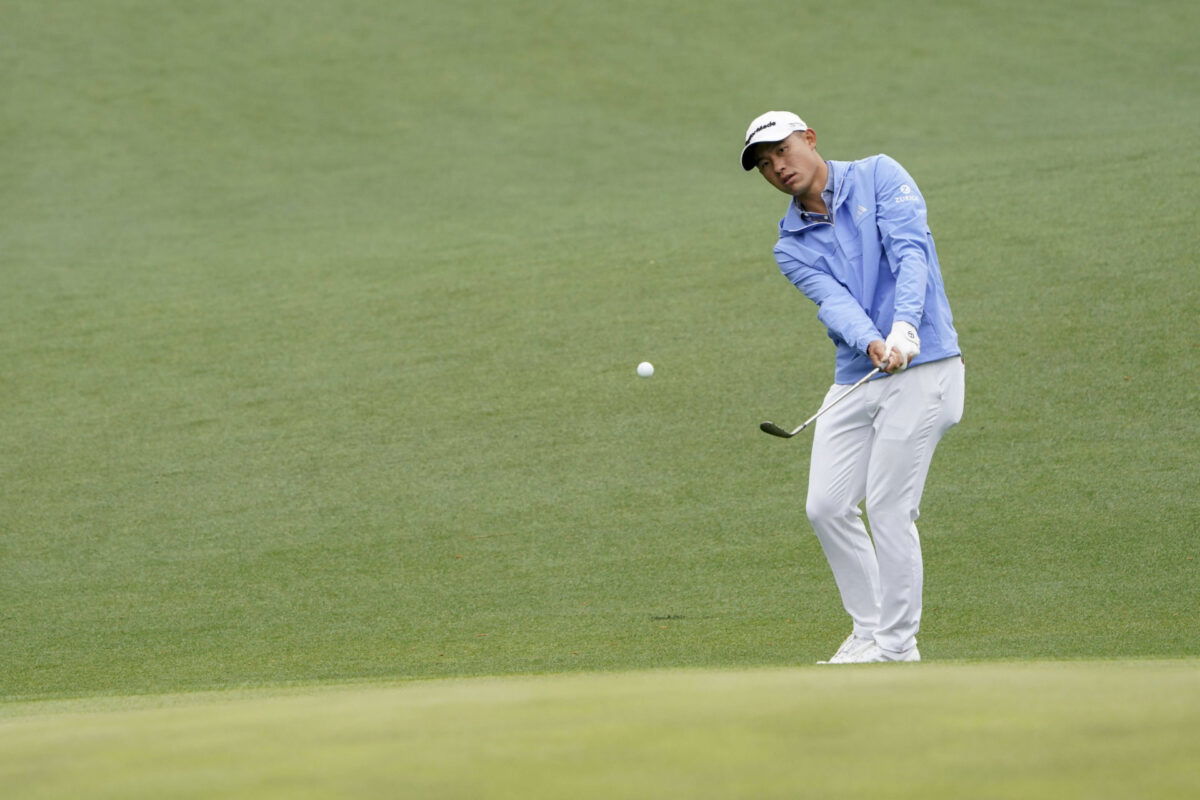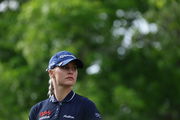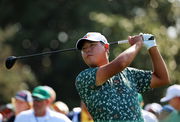
Imago
PGA, Golf Herren The Masters – Practice Round Apr 3, 2023 Augusta, Georgia, USA Collin Morikawa chips onto the no. 14 green during a practice round for The Masters golf tournament at Augusta National Golf Club. Augusta Augusta National Golf Club Georgia USA, EDITORIAL USE ONLY PUBLICATIONxINxGERxSUIxAUTxONLY Copyright: xKatiexGoodalex 040323_TheMasters_0204. Image Courtesy: IMAGO

Imago
PGA, Golf Herren The Masters – Practice Round Apr 3, 2023 Augusta, Georgia, USA Collin Morikawa chips onto the no. 14 green during a practice round for The Masters golf tournament at Augusta National Golf Club. Augusta Augusta National Golf Club Georgia USA, EDITORIAL USE ONLY PUBLICATIONxINxGERxSUIxAUTxONLY Copyright: xKatiexGoodalex 040323_TheMasters_0204. Image Courtesy: IMAGO
Everyone wants their shots to take better flight and cover greater distance. Naturally, our first look goes to the power. However, as contradictory as it seems, the trajectory of your swing depends more on how you set it up. A consistent swinging routine beats strength every time. No one would know this better than Jordan Spieth or Collin Morikawa, who have built their games on discipline and consistency over muscle power.
Watch What’s Trending Now!
Now that we know exactly what our clubs demand on the courses, how do we create a pre-shot system that delivers under pressure? Here’s a list of the top 5 tips to help you build your very own aiming routine.
Top Stories
Charley Hull Opens Up on Traumatic Divorce from Ex-Husband for the First Time Ever

LIV Golf to Cut Ties With Veteran Pro After His PGA Tour Return Intentions Became Public

‘Penalize Him’: PGA Tour Q-School Faces Heat as Slow Play Incident Goes Unaddressed

Justin Thomas Undergoes Intense Physical ‘Rehab’ After Surgery Delayed His PGA Tour Return

Si Woo Kim Shows Where His Loyalty Lies With Clear Stance on LIV Golf Rumors – Report

ADVERTISEMENT
#1: Aiming and alignment
Let’s start by aligning ourselves perfectly with the target. No, not the body first. This is a common mistake most rookie golfers make. By lining up your body directly at the target, you steal your club’s power and accuracy. So, the first step is to aim the clubface where you want the ball to go, i.e., the target. The direction and angle of the clubface are what actually determine the starting position of the ball. The wider the angle of error, the bigger the miss.
Now that you have aimed the clubface directly at the target, position your body parallel to the target line, not pointing at it. If you’re a right-handed golfer, your feet, hips, and shoulders need to be a little to the left of the target. This stance might feel a little odd at first, but it ensures the clubface remains square through the impact. This ensures consistent, accurate shots. Build your setup around your clubface.
ADVERTISEMENT
#2: Build a visual routine
A big part of the swinging process is based on intuition and our visual tendencies. Frankly, it’s also a sense we cannot rely on completely, since the target that looks square to you might feel off to another golfer based on eye position and stance. Hence, it’s important to know what the correct aim appears to you once you’re perfectly aligned with the target.
Set up your clubface in perfect alignment with the target. Then, while at practice, make a mental note of where the target feels to you. Even if it’s slightly to the right or left, that becomes your personal visual cue, which you can then replicate for other shots.
ADVERTISEMENT
#3: Use training devices
What makes us human is mistakes. And it’s physically impossible for us to perfectly align ourselves for the shot unless we’re pro golfers who have years of experience. Here’s where alignment aids come. When used properly, these training devices can improve your swinging game instead of making you heavily reliant on them.
View this post on Instagram
ADVERTISEMENT
One of the fan-favorites is the Alignment Ball, which helps check start lines on putts and full shots easily. Other devices you might use include alignment sticks for proper visual alignment for full swings, chips, and putts. Putting mirrors are good tools to help with eye line and putter face alignment.
#4: Look at the target
The most straightforward of all the tips, this is probably still one of the most common misses. When a newbie first begins aiming for their shot, the ball itself becomes an easy distraction. As a result, we find ourselves looking at the ball throughout the shot. Aiming well starts with connecting your eyes to your target.
ADVERTISEMENT
While aiming, keep looking back and forth from the ball to the target. It helps your body naturally align with the target and improves your feel for distance and direction. If you take a look at the games of professional golfers, you will find them doing the exact thing. As it appears, sometimes the simplest of adjustments can make the biggest difference.
#5: Control your ball flight and swing trajectory
Imagine this—you’ve perfected your stance, aligned the clubface, took your visual cues into account, and still hit the biggest misses. And all that happens since you still haven’t figured out how to deliver a consistent ball flight. It’s important you know how to hit the ball relatively close to the aim instead of a huge ball curvature. A lack of consistent shots close to the target defeats the entire point of aiming.
ADVERTISEMENT
While aiming helps you know you’re hitting in the right direction, swinging is what determines whether you hit it or not. Stand behind the ball and practice your swing for optimal distance coverage and ball elevation. Once you know how to convert leverage into powerful shots, you’re all set up to sweep the greens with birdies and eagles. But don’t deny aiming and alignment the time it deserves right before you hit the swing.
Mastering your aim isn’t about reinventing your swing. It’s about building a repeatable routine that keeps you calm, aligned, and confident. When your setup is consistent, every shot has a clear purpose and a better chance of finding its target.
ADVERTISEMENT
ADVERTISEMENT
ADVERTISEMENT

